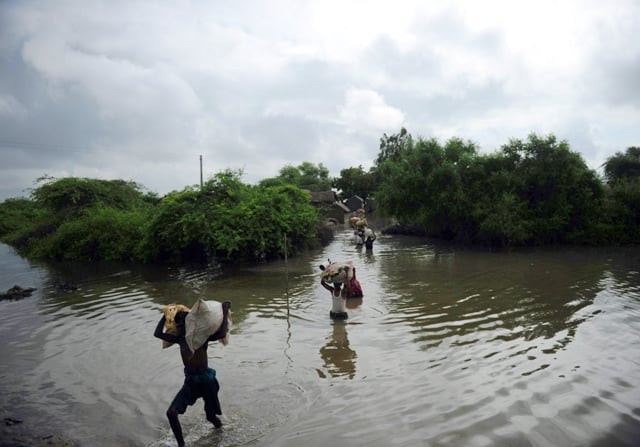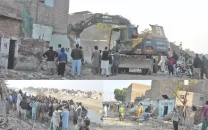Sea intrusion claiming land and livelihoods: experts
Speakers discuss menace of sea intrusion, ways to deal with it at seminar in Thatta

The RAM also identified pilot project sites for diverting flood water and maintaining natural flows to the Arabian Sea so as to prevent sea intrusion. PHOTO: AFP/FILE
"Sindh will not withdraw its demand for allocation of 10 million acre-feet (MAF) of water [from Indus River] for the Indus delta, according to the 1991 water accord," said Pakistan Peoples Party Senator Dr Karim Khwaja. He was speaking at a seminar organised on Thursday at the Centre for Coastal and Deltaic Studies in Thatta.
Under the accord, the Indus River System Authority is stipulated to release 10 MAF in the downstream of the Kotri Barrage towards the sea to stop the intrusion. However, citing shortage of water in the river, the required or a larger amount of water is only discharged during the flood season.
"Due to non-implementation of the accord, the required water isn't released [in the] downstream of the Kotri Barrage," said the senator.
Boosting agriculture: Australia mission launches water schemes
On March 8, Prime Minister Nawaz Sharif, while acknowledging magnitude of the problem, announced at a public meeting in Thatta that a sea embankment to protect Thatta, Sujawal and Badin will be built. Although a feasibility study for the project has yet to be carried out, the seashore is estimated to be spread over around 200 kilometres.
"Construction of the sea wall will have limited viability," observed Dr Sarfraz Hussain Solangi, pro-vice-chancellor of Sindh University's Thatta campus. "It can be one of the options but not the only option."
Dr Solangi also pointed out a sharp reduction in the amount of silt - a river sediment - in the Indus owing to a substantial decrease in the water flow. This, he added, has also led to a reversal in the delta building process, for which the river sediment is quintessential. "The threat is very serious and immediate attention is required through a focused approach," he suggested.
Nasir Ali Panhwar, executive director of the non-profit Centre for Environment and Development, highlighted the vulnerability of the coastal areas due to cyclones and an absence of disaster mitigation measures. He recalled that the 1999 cyclone wiped out 73 villages, killed 168 people and displaced over half a million people in Thatta and Badin, adding that in last century four cyclones have hit the province's coast.
Woes: ‘Agriculture sector not getting attention’
Dr Saeed Ahmed Bablani of the geology department said that the fresh groundwater in the villages along the coastline and near the river is fast becoming brackish. "Many villages in recent years have been evacuated because freshwater aquifers have become saline," he said, adding that water-borne diseases among the people have also risen significantly.
The director of the Centre for Coastal and Delta Studies, Dr Mukhtiar Ahmed Mahar, expressed hope that this newly established centre will contribute scientific research on different aspects related to the marine, coastal and delta ecosystems.
Former Sindh irrigation secretary Idris Rajput, Dr Imdad Siddiqui of the Centre for Pure and Applied Geology, Dr Abdul Jabbar Memon of Sindh fisheries department and other experts also spoke at the seminar.



















COMMENTS
Comments are moderated and generally will be posted if they are on-topic and not abusive.
For more information, please see our Comments FAQ